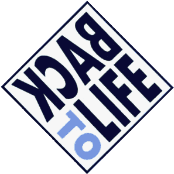Dental Practices - Resuscitation & Medical Emergency Equipment
The following extracts have been taken from the Resuscitation Council UK Website, and do not constitue the full guidelines.
The equipment used for any medical emergency or cardiopulmonary arrest should be standardised throughout general dental practices in the UK.
1. All clinical areas should have immediate access to resuscitation drugs, equipment for airway management and an automated external defibrillator (AED). Staff must be familiar with the location of all resuscitation equipment within their working area. The following is the minimum equipment recommended:
- Portable oxygen cylinder (D size) with pressure reduction valve and flowmeter.
- Oxygen face mask with tubing.
- Basic set of oropharyngeal airways (sizes 1,2,3 and 4).
- Pocket mask with oxygen port.
- Self-inflating bag and mask apparatus with oxygen reservoir and tubing (1 litre size bag) where staff have been appropriately trained.
- Variety of well fitting adult and child face masks for attaching to selfinflating bag.
- Portable suction with appropriate suction catheters and tubing e.g., the Yankauer sucker.
- Single use sterile syringes and needles.
- ‘Spacer' device for inhaled bronchodilators.
- Automated blood glucose measurement device.
- Automated External Defibrillator.
2. Automated External Defibrillators (AEDs) will reduce mortality from cardiac arrest caused by ventricular fibrillation and pulseless ventricular tachycardia. The widespread deployment of such devices throughout the UK and the Department of Health's ‘Public Access Defibrillation' programme has ensured that such machines are now readily available and in common use.
3. The provision of an AED enables all dental staff to attempt defibrillation safely after relatively little training and their use is therefore recommended. These defibrillators should have recording facilities and standardised consumables, e.g., self-adhesive electrode pads, connecting cables. Adult AEDs can safely be used on children over 8 years old. Some machines have paediatric pads or a mode that permits them to be ‘attenuated' to make them more suitable for use in children between 1 and 8 years of age. These modifications should be considered for practices that regularly treat children. In cardiac arrest situations when paediatric pads or attenuation is not available, a standard adult AED may be used in a child over 1 year old. Staff should be familiar with the device in use on their premises and its mode of operation.
4. It is an expectation of the public that AEDs should be available in every healthcare environment and the dental surgery is not seen as an exception.
5. Where possible all emergency medical equipment should be single use and latex free.
6. Responsibility for checking resuscitation equipment rests with the individual dental practice where the equipment is held. This process should be designated to named individuals. The frequency of checking will depend upon local circumstances but should ideally be weekly. Checking should be the subject of local audit.
7. A planned replacement programme should be in place for equipment and drugs that are used or reach their expiry date.
To view the full version of 'Standards for Clinical Practice and Training for Dental Practitioners and Dental Care Professionals in General Dental Practice' please visit the Resuscitation Council Uk website on www.resus.org.uk.
To speak to one of the Back to Life team directly concerning your training requirements, please do not hesitate to Contact Us.
